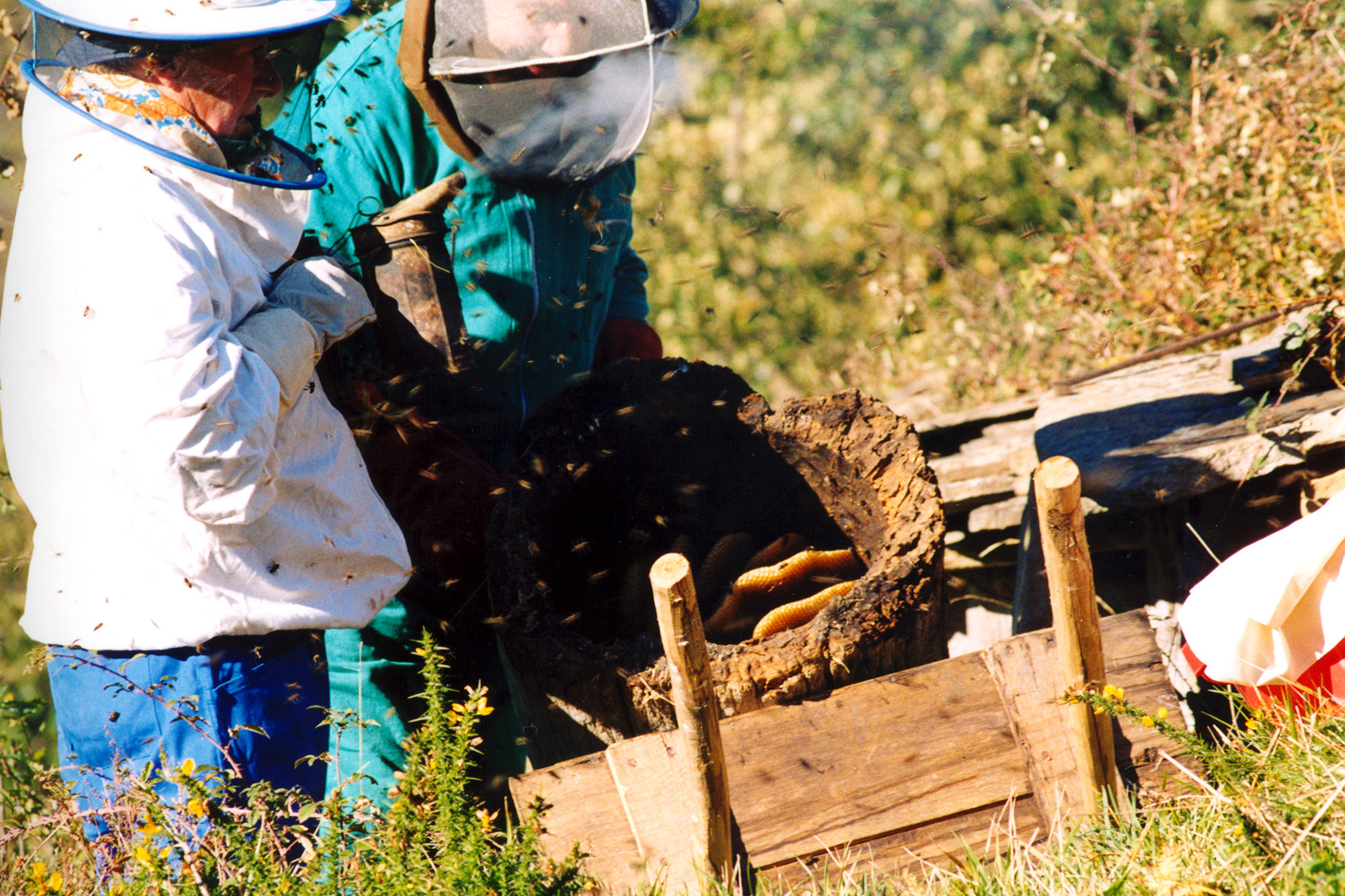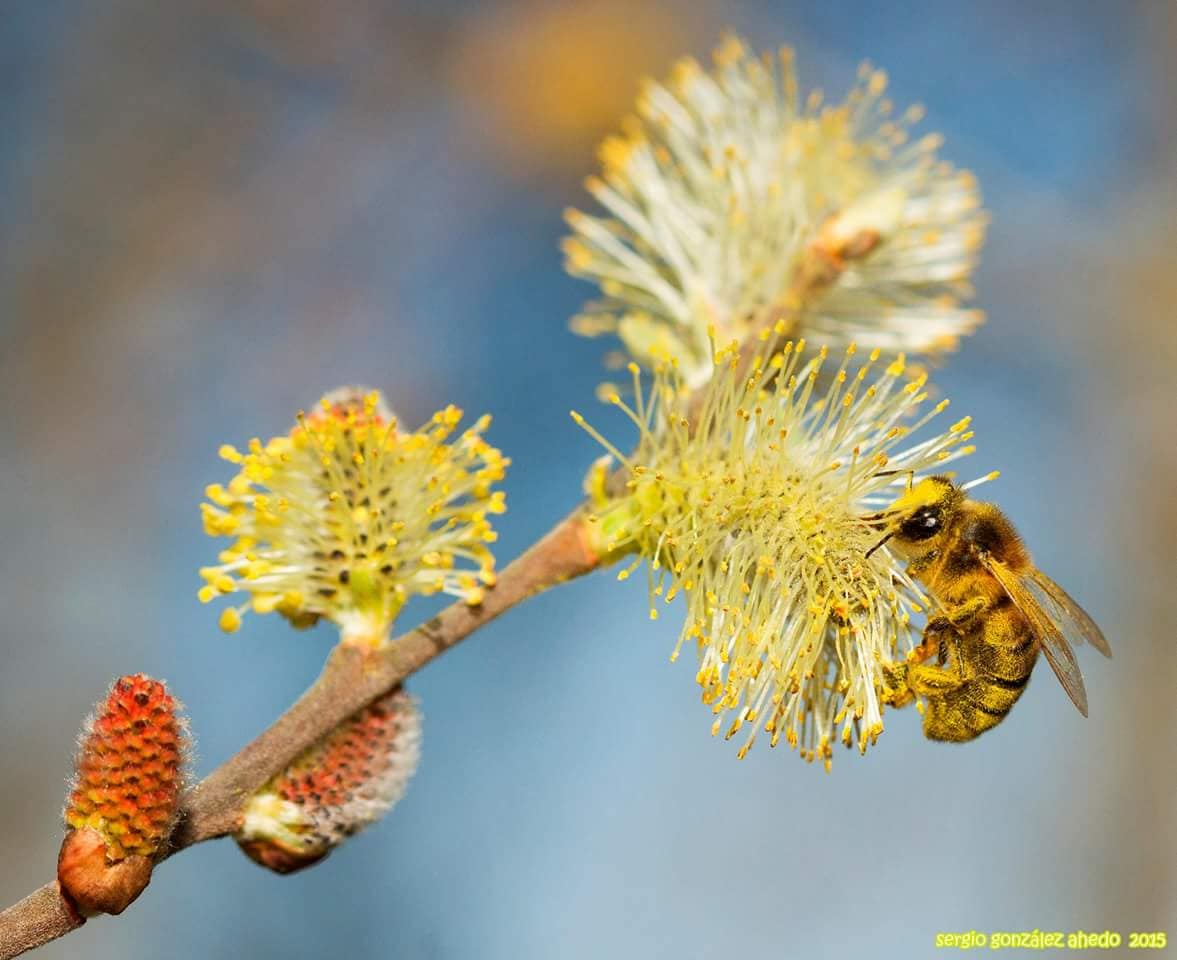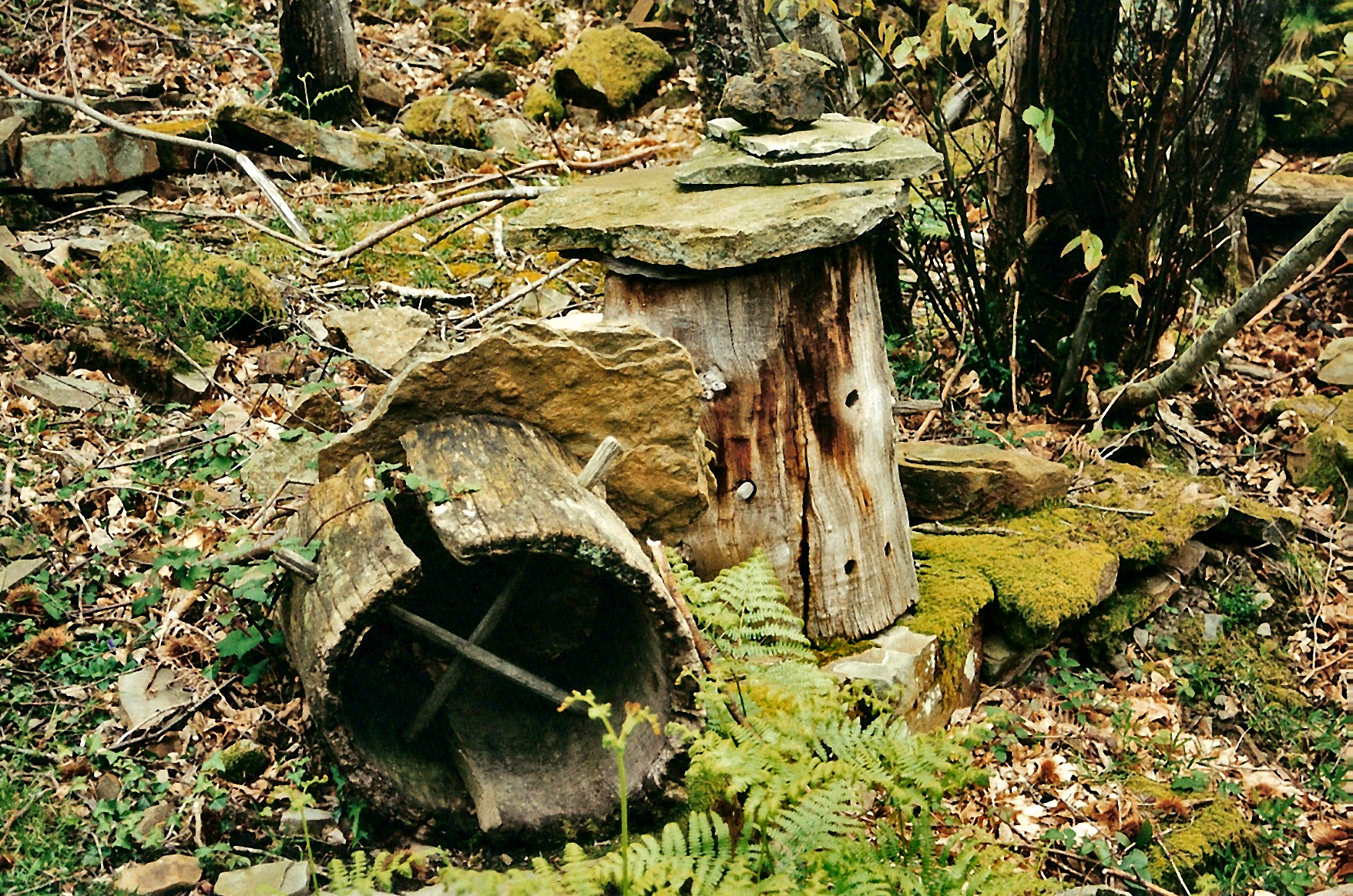Archives

Beekeepers in Carranza (Bizkaia), 2003. Miguel Sabino Díaz.
Folks have kept bees in pretty much all inland locations of our country, be it out of curiosity or by tradition. Joxe Mari Gabaro, native of Markina (Bizkaia) and named after the house where he was born, owned several beehives to harvest honey from them. His fellow citizens would have referred to him as an erle-maisua, a similar compound to ontzi-maisua ‘quartermaster’, formed from erle ‘bee, beehive’ and maisu ‘master’, literally meaning ‘bee-master’. (more…)

Bee on willow catkin. Sergio González Ahedo.
Years ago beehives were kept on most farms. Honeybees were highly respected, appreciated and loved for their honey and wax.
So much so that whoever got rid of a swarm of bees would have an arm amputated, as older folk from the Valley of Carranza (Bizkaia) used to say. This ancient thought still lives in the memory of our elders, who thus would never destroy a hive. A similar belief that bee and honey thieves were punished by removal of their right arms entered the folklore of some localities in Álava. (more…)

Old chestnut log hives. Miguel Sabino Díaz.
In Carranza, up in the mountains of Ordunte, a spot known as Los Cepos Vinagre —The Vinegar Hives— in lands under Pando Council jurisdiction houses the remains of an ancient apiary, a real treasured asset of the local ethnographic heritage. (more…)

